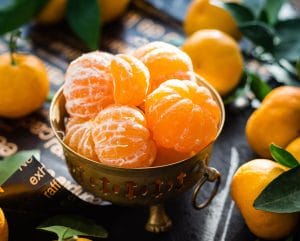
Follow Our Tried & Tested Tips to Decrease Bladder Leaking Without Doing a Single Kegel!
The internet can be a confusing place when trying to heal one’s health problems independently. So we’ve put together this easy guide with 5 simple steps you can take to reduced bladder leaking today. And none of the steps includes doing Kegels!
Step 1. Cut Out Bladder Irritants
Did you know that certain foods and drinks are bladder irritants, and could be making your leaking worse? If you or someone in your family experiences belly bloating, gassiness, stomach cramping, and discomfort or sensitivity with certain foods, your response to these irritants is probably worse!

The general rule of thumb is that anything that is acidic or otherwise irritating to the smooth muscle lining of the bladder, will cause increased bathroom trips and associated leaks.
Common culprits are citrus fruits & juices (orange, cranberry etc), alcohol, dark chocolate, caffeine, tomatoes & tomato-based sauces, and spicy foods. Other less obvious causes of bladder urgency, frequency, and leaking can be carbonated drinks like seltzers & sodas, energy drinks, and artificial sweeteners. Habits like smoking and vaping are also associated with bladder irritation & leaking.
If you want to decrease urinary leaking, cutting back on these bladder irritants is a great first step.
Step 2. Achieve Complete Bowel Evacuation
Most people believe they fully clear their bowels, but are in-fact constipated. Constipation in women & men can increase urinary leaking by the additional pressure on the bladder by stool in the rectum, especially during movement & exercise.
As seen in the image above, the pelvis is a very tightly packed space, and any additional pressure – such as stool in the rectum from a partial bowel movement – can contribute to pressure on the bladder, causing leaking.
The image below shows various types of stool consistency. Type 4 stool, which is smooth without any cracks, indicates a healthy gut with full clearance of bowel contents. If your bowel movements look like Type 1-3, then you are considered to be constipated. While the image, shows Type 3 as “normal”, it is in fact indicative of a slightly dehydrated stool due to inadequate water intake or an incomplete emptying of the bowel.
 Image courtesy – Cabot Health, Bristol Stool Chart – http://cdn.intechopen.com/pdfs-wm/46082.pdf
Image courtesy – Cabot Health, Bristol Stool Chart – http://cdn.intechopen.com/pdfs-wm/46082.pdf
So if you identify yourself as being constipated, increase fiber, hydration & exercise to improve bowel emptying and bladder leakage.
3. Ensure Complete Bladder Emptying Every Time You Use the Toilet
If you’re a frequent flier to the restroom, chances are high that you’re not emptying your bladder fully each time you go. Watch the video below for easy tips to get a better empty each time you pee. Once you get more urine out with each void, there is less urine in the bladder to cause leaking or frequent urination.
The above tips work well for people of all genders! Men may want to modify some of the techniques, by performing the pelvic tilts in standing.
Step 4. Do NOT Rush to the Bathroom
Remember the visual from cartoons and movies where the scared or nervous character pees their pants? That is 100% based in fact! Fear, nervousness, and stress can cause our bladder to leak, as our body prepares for “fight or flight”.
So you’re increasing your chances of leaking by rushing to the bathroom when you feel the urge to empty. We created a special guide that you can save to your phone or email to a friend, which helps you decrease urgency and leaking when going to the bathroom.
Click the button below to view and save the guide to use it next time you feel the strong urge to empty your bladder!
Step 5. See a Pelvic Floor Therapist
All the above tips will help you get started with improving your bladder control, but you may still need some personalized 1-on-1 care to achieve full bladder control. Contact us today to get started with in-person or virtual care to improve your confidence in your bladder and yourself!
If this article has been helpful to you, share it with your friends on social media or with a loved one by email using the buttons below. Stay connected for more helpful pelvic health info!









4 Responses
Thank you, Sujata, for this explanation of the process to better pelvic health. It is a good review of things you have been teaching meThank you.
You’re very welcome! Our aim is to help our clients and the general public be better informed about staying healthy in their pelvis. We’re glad to help!
Great article, I’m going to start doing these!
Hi Natalie, We’re glad you found these bladder exercises helpful! Good luck and wising you the best with your exercise program.
Be sure to check back regularly for more helpful information or sign up for our email updates!